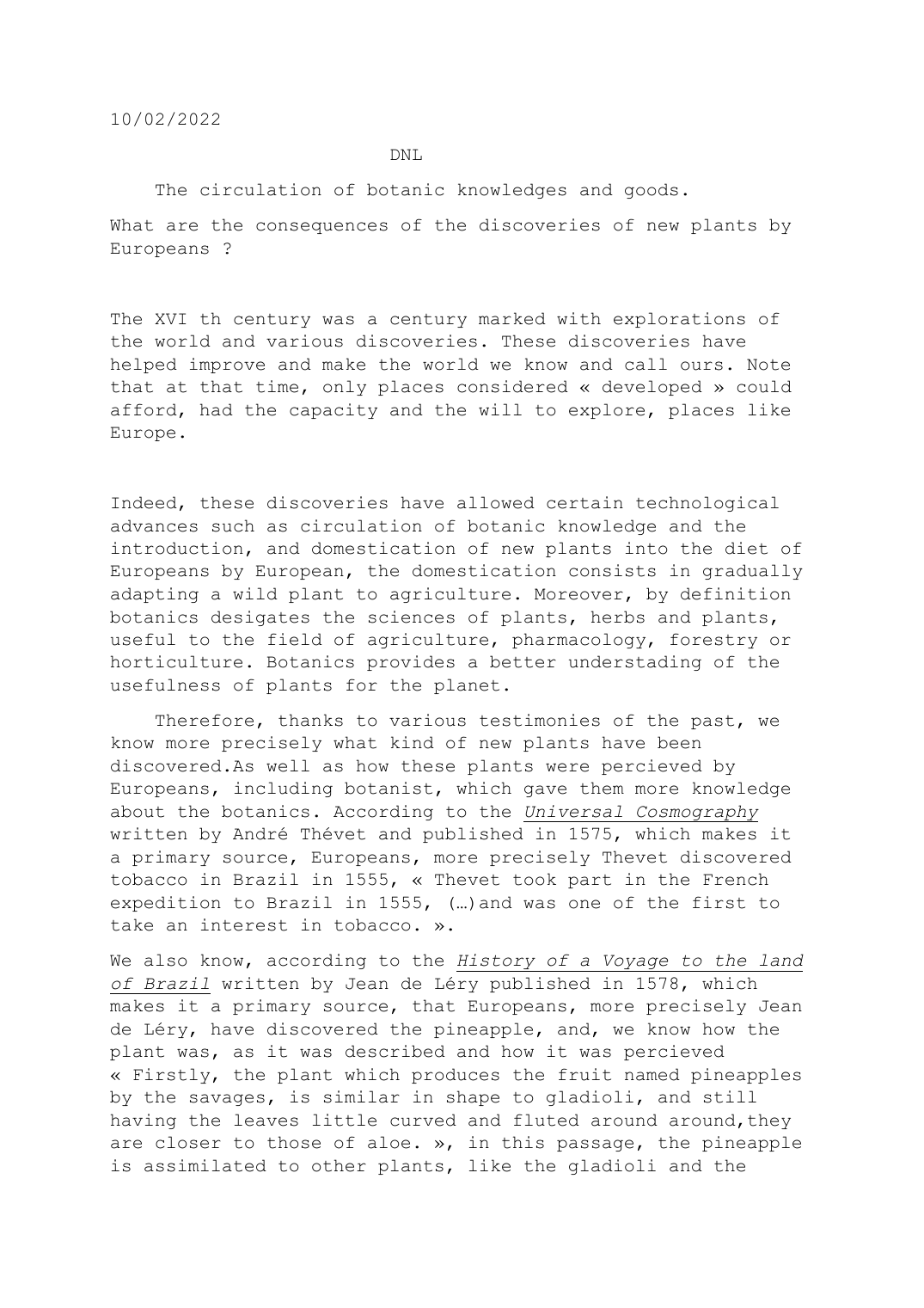What are the consequences of the discoveries of new plants by Europeans ?
Publié le 28/03/2022

Extrait du document
«
10/02/2022
DNL
The circulation of botanic knowledges and goods.
What are the consequences of the discoveries of new plants by
Europeans ?
The XVI th century was a century marked with explorations of
the world and various discoveries.
These discoveries have
helped improve and make the world we know and call ours.
Note
that at that time, only places considered « developed » could
afford, had the capacity and the will to explore, places like
Europe.
Indeed, these discoveries have allowed certain technological
advances such as circulation of botanic knowledge and the
introduction, and domestication of new plants into the diet of
Europeans by European, the domestication consists in gradually
adapting a wild plant to agriculture.
Moreover, by definition
botanics desigates the sciences of plants, herbs and plants,
useful to the field of agriculture, pharmacology, forestry or
horticulture.
Botanics provides a better understading of the
usefulness of plants for the planet.
Therefore, thanks to various testimonies of the past, we
know more precisely what kind of new plants have been
discovered.As well as how these plants were percieved by
Europeans, including botanist, which gave them more knowledge
about the botanics.
According to the Universal Cosmography
written by André Thévet and published in 1575, which makes it
a primary source, Europeans, more precisely Thevet discovered
tobacco in Brazil in 1555, « Thevet took part in the French
expedition to Brazil in 1555, (…)and was one of the first to
take an interest in tobacco.
».
We also know, according to the History of a Voyage to the land
of Brazil written by Jean de Léry published in 1578, which
makes it a primary source, that Europeans, more precisely Jean
de Léry, have discovered the pineapple, and, we know how the
plant was, as it was described and how it was percieved
« Firstly, the plant which produces the fruit named pineapples
by the savages, is similar in shape to gladioli, and still
having the leaves little curved and fluted around around,they
are closer to those of aloe.
», in this passage, the pineapple
is assimilated to other plants, like the gladioli and the.
»
↓↓↓ APERÇU DU DOCUMENT ↓↓↓
Liens utiles
- Subject: What are the impacts of racism on black people in the United States
- Fiche de lecture sur le chapitre 11: The Greek of the New Testament, par Mark Janse, sur la section IV de l’ouvrage, intitulé: Ancient Greek: structure and change, pages 646-653.
- All the Things You Are - analyse de l'oeuvre.
- What are reasons and why do they matter in ethics?
- John Winthrop: "A City Upon a Hill" In 1629 English attorney and Puritan John Winthrop was chosen by the Massachusetts Bay Company, an English trading firm, to govern its colony in New England.










